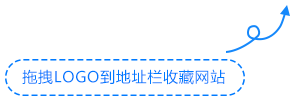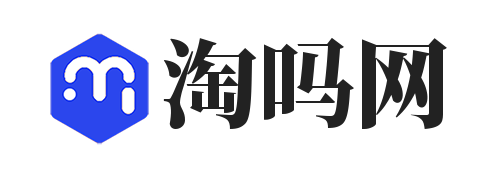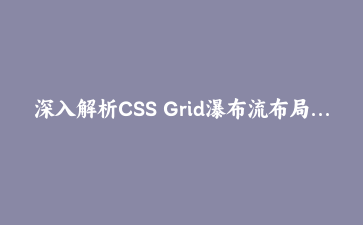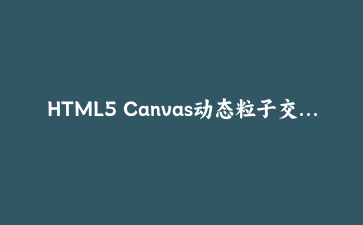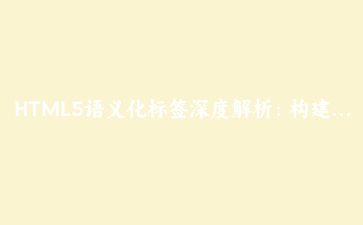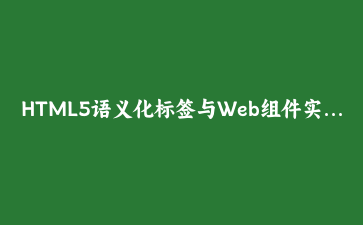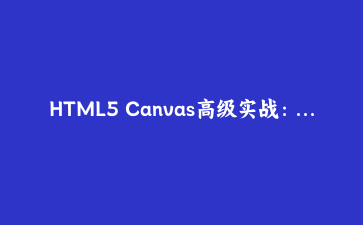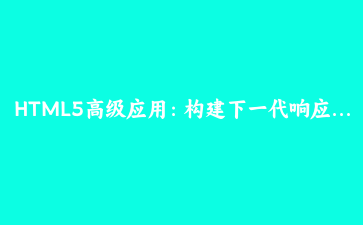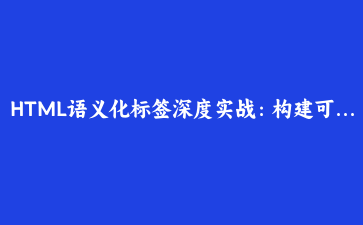发布日期:2024年1月 | 作者:前端架构师
一、Web Components:原生组件化解决方案
Web Components是一套完整的浏览器原生组件技术标准,包含Custom Elements、Shadow DOM、HTML Templates三大核心技术,为构建可复用、可维护的前端组件提供了原生支持。
技术栈组成:
- Custom Elements
- 定义自定义HTML元素及其行为
- Shadow DOM
- 创建封装的样式和行为隔离域
- HTML Templates
- 定义可复用的HTML模板片段
- ES Modules
- 模块化的组件导入导出机制
二、自定义元素:从基础到高级实践
1. 自主自定义元素
// 基础自定义元素实现
class UserCard extends HTMLElement {
constructor() {
super();
this.attachShadow({ mode: 'open' });
}
static get observedAttributes() {
return ['name', 'avatar', 'role'];
}
connectedCallback() {
this.render();
this.bindEvents();
}
attributeChangedCallback(name, oldValue, newValue) {
if (oldValue !== newValue) {
this.render();
}
}
render() {
const name = this.getAttribute('name') || '匿名用户';
const avatar = this.getAttribute('avatar') || '/default-avatar.png';
const role = this.getAttribute('role') || '用户';
this.shadowRoot.innerHTML = `
<div class="user-card">
<img src="${avatar}" alt="${name}" class="avatar">
<div class="user-info">
<h3 class="username">${name}</h3>
<span class="user-role">${role}</span>
</div>
<button class="follow-btn">关注</button>
</div>
<style>
.user-card {
display: flex;
align-items: center;
padding: 16px;
border: 1px solid #e1e5e9;
border-radius: 8px;
background: white;
max-width: 320px;
}
.avatar {
width: 48px;
height: 48px;
border-radius: 50%;
margin-right: 12px;
}
.user-info {
flex: 1;
}
.username {
margin: 0 0 4px 0;
font-size: 16px;
font-weight: 600;
}
.user-role {
color: #666;
font-size: 14px;
}
.follow-btn {
padding: 6px 16px;
background: #007bff;
color: white;
border: none;
border-radius: 4px;
cursor: pointer;
}
</style>
`;
}
bindEvents() {
const followBtn = this.shadowRoot.querySelector('.follow-btn');
followBtn.addEventListener('click', () => {
this.dispatchEvent(new CustomEvent('user-follow', {
detail: { userId: this.getAttribute('user-id') },
bubbles: true
}));
});
}
}
// 注册自定义元素
customElements.define('user-card', UserCard);2. 增强型内置元素
// 增强现有HTML元素
class EnhancedButton extends HTMLButtonElement {
constructor() {
super();
this.addEventListener('click', this.handleClick);
}
handleClick() {
// 添加加载状态
this.setAttribute('loading', '');
this.innerHTML = '加载中...';
this.disabled = true;
// 模拟异步操作
setTimeout(() => {
this.removeAttribute('loading');
this.innerHTML = '操作完成';
this.disabled = false;
}, 2000);
}
disconnectedCallback() {
this.removeEventListener('click', this.handleClick);
}
}
// 注册增强元素
customElements.define('enhanced-button', EnhancedButton, { extends: 'button' });三、Shadow DOM:样式与行为隔离技术
1. 封闭式Shadow DOM
class SecureComponent extends HTMLElement {
constructor() {
super();
// 创建封闭的Shadow DOM,外部无法访问
this.attachShadow({ mode: 'closed' });
this._internalState = {};
}
connectedCallback() {
this.render();
}
// 提供安全的API方法
setData(key, value) {
this._internalState[key] = value;
this.render();
}
getData(key) {
return this._internalState[key];
}
render() {
this.shadowRoot.innerHTML = `
<div class="secure-component">
<h3>安全组件</h3>
<p>内部状态: ${JSON.stringify(this._internalState)}</p>
<slot name="content"></slot>
</div>
<style>
.secure-component {
border: 2px solid #dc3545;
padding: 20px;
border-radius: 8px;
background: #f8f9fa;
}
.secure-component h3 {
color: #dc3545;
margin-top: 0;
}
/* 这些样式不会影响外部元素 */
p {
color: #666;
font-size: 14px;
}
</style>
`;
}
}
customElements.define('secure-component', SecureComponent);2. 样式穿透与宿主选择器
class ThemedComponent extends HTMLElement {
constructor() {
super();
this.attachShadow({ mode: 'open' });
}
connectedCallback() {
this.render();
this.setupThemeObserver();
}
setupThemeObserver() {
// 监听宿主元素的属性变化
const observer = new MutationObserver((mutations) => {
mutations.forEach((mutation) => {
if (mutation.attributeName === 'theme') {
this.render();
}
});
});
observer.observe(this, { attributes: true });
}
render() {
const theme = this.getAttribute('theme') || 'light';
this.shadowRoot.innerHTML = `
<div class="themed-component ${theme}">
<h3>主题化组件</h3>
<p>当前主题: ${theme}</p>
<div class="content">
<slot></slot>
</div>
</div>
<style>
:host {
display: block;
margin: 16px 0;
}
:host([hidden]) {
display: none;
}
:host(.dark) .themed-component {
background: #2d3748;
color: white;
}
.themed-component {
padding: 20px;
border-radius: 8px;
transition: all 0.3s ease;
}
.themed-component.light {
background: #f7fafc;
border: 1px solid #e2e8f0;
}
.themed-component.dark {
background: #2d3748;
color: white;
border: 1px solid #4a5568;
}
/* 从外部传入的CSS变量 */
.content {
color: var(--content-color, inherit);
font-size: var(--content-size, 14px);
}
</style>
`;
}
}
customElements.define('themed-component', ThemedComponent);四、模板与插槽:内容分发系统
1. 多插槽内容分发
<template id="dialog-template">
<div class="dialog-overlay">
<div class="dialog">
<div class="dialog-header">
<h2 class="dialog-title">
<slot name="title">默认标题</slot>
</h2>
<button class="close-btn">×</button>
</div>
<div class="dialog-body">
<slot name="content"></slot>
</div>
<div class="dialog-footer">
<slot name="footer">
<button class="btn-primary">确定</button>
<button class="btn-secondary">取消</button>
</slot>
</div>
</div>
</div>
<style>
.dialog-overlay {
position: fixed;
top: 0;
left: 0;
right: 0;
bottom: 0;
background: rgba(0,0,0,0.5);
display: flex;
align-items: center;
justify-content: center;
z-index: 1000;
}
.dialog {
background: white;
border-radius: 8px;
min-width: 400px;
max-width: 90vw;
box-shadow: 0 10px 25px rgba(0,0,0,0.2);
}
.dialog-header {
display: flex;
justify-content: space-between;
align-items: center;
padding: 16px 20px;
border-bottom: 1px solid #e1e5e9;
}
.dialog-title {
margin: 0;
font-size: 18px;
}
.close-btn {
background: none;
border: none;
font-size: 24px;
cursor: pointer;
padding: 0;
width: 30px;
height: 30px;
}
.dialog-body {
padding: 20px;
}
.dialog-footer {
padding: 16px 20px;
border-top: 1px solid #e1e5e9;
display: flex;
gap: 12px;
justify-content: flex-end;
}
</style>
</template>
<script>
class ModalDialog extends HTMLElement {
constructor() {
super();
this.attachShadow({ mode: 'open' });
this.template = document.getElementById('dialog-template');
}
connectedCallback() {
this.render();
this.bindEvents();
}
render() {
this.shadowRoot.appendChild(this.template.content.cloneNode(true));
}
bindEvents() {
const closeBtn = this.shadowRoot.querySelector('.close-btn');
const overlay = this.shadowRoot.querySelector('.dialog-overlay');
closeBtn.addEventListener('click', () => this.close());
overlay.addEventListener('click', (e) => {
if (e.target === overlay) this.close();
});
}
open() {
this.setAttribute('open', '');
}
close() {
this.removeAttribute('open');
this.dispatchEvent(new CustomEvent('dialog-close'));
}
}
customElements.define('modal-dialog', ModalDialog);
</script>五、完整组件库实战构建
1. 数据表格组件
class DataTable extends HTMLElement {
constructor() {
super();
this.attachShadow({ mode: 'open' });
this.data = [];
this.columns = [];
}
static get observedAttributes() {
return ['data', 'columns', 'page-size'];
}
connectedCallback() {
this.parseAttributes();
this.render();
}
attributeChangedCallback(name, oldValue, newValue) {
if (name === 'data' && newValue) {
this.data = JSON.parse(newValue);
}
if (name === 'columns' && newValue) {
this.columns = JSON.parse(newValue);
}
this.render();
}
parseAttributes() {
const dataAttr = this.getAttribute('data');
const columnsAttr = this.getAttribute('columns');
if (dataAttr) this.data = JSON.parse(dataAttr);
if (columnsAttr) this.columns = JSON.parse(columnsAttr);
}
render() {
this.shadowRoot.innerHTML = `
<div class="data-table">
<div class="table-header">
<h3><slot name="title">数据表格</slot></h3>
<div class="table-controls">
<slot name="controls"></slot>
</div>
</div>
<div class="table-container">
<table>
<thead>
<tr>
${this.columns.map(col =>
`<th data-field="${col.field}">${col.title}</th>`
).join('')}
</tr>
</thead>
<tbody>
${this.data.map(row => `
<tr>
${this.columns.map(col =>
`<td data-field="${col.field}">${row[col.field] || ''}</td>`
).join('')}
</tr>
`).join('')}
</tbody>
</table>
</div>
<div class="table-footer">
<slot name="footer"></slot>
</div>
</div>
<style>
.data-table {
border: 1px solid #e1e5e9;
border-radius: 8px;
overflow: hidden;
}
.table-header {
display: flex;
justify-content: space-between;
align-items: center;
padding: 16px 20px;
background: #f8f9fa;
border-bottom: 1px solid #e1e5e9;
}
.table-header h3 {
margin: 0;
font-size: 18px;
}
.table-container {
overflow-x: auto;
}
table {
width: 100%;
border-collapse: collapse;
}
th, td {
padding: 12px 16px;
text-align: left;
border-bottom: 1px solid #e1e5e9;
}
th {
background: #f8f9fa;
font-weight: 600;
position: sticky;
top: 0;
}
tr:hover {
background: #f8f9fa;
}
.table-footer {
padding: 12px 20px;
background: #f8f9fa;
border-top: 1px solid #e1e5e9;
}
</style>
`;
}
// 公共API方法
updateData(newData) {
this.data = newData;
this.render();
}
addRow(rowData) {
this.data.push(rowData);
this.render();
}
}
customElements.define('data-table', DataTable);六、最佳实践与性能优化
性能优化策略
- 延迟加载: 使用Intersection Observer实现组件懒加载
- 事件委托: 在shadow root级别处理事件,减少监听器数量
- 属性批处理: 避免频繁的属性更新导致的重复渲染
- 内存管理: 在disconnectedCallback中清理资源
组件生命周期管理
class OptimizedComponent extends HTMLElement {
constructor() {
super();
this.attachShadow({ mode: 'open' });
this._updateScheduled = false;
this._intersectionObserver = null;
}
connectedCallback() {
this.setupIntersectionObserver();
this.scheduleUpdate();
}
disconnectedCallback() {
// 清理工作
if (this._intersectionObserver) {
this._intersectionObserver.disconnect();
}
this._updateScheduled = false;
}
setupIntersectionObserver() {
this._intersectionObserver = new IntersectionObserver((entries) => {
entries.forEach(entry => {
if (entry.isIntersecting) {
this.setAttribute('visible', '');
} else {
this.removeAttribute('visible');
}
});
});
this._intersectionObserver.observe(this);
}
scheduleUpdate() {
if (!this._updateScheduled) {
this._updateScheduled = true;
requestAnimationFrame(() => {
this.render();
this._updateScheduled = false;
});
}
}
render() {
// 渲染逻辑
}
}总结
Web Components技术为前端开发带来了真正的组件化革命:
- 框架无关: 不依赖任何前端框架,浏览器原生支持
- 完美封装: Shadow DOM提供真正的样式和行为隔离
- 高度复用: 一次开发,随处使用
- 标准统一: W3C标准,长期兼容性保障
- 渐进增强: 可以与现有技术栈无缝集成
通过本指南的实战案例,我们构建了从基础到高级的完整组件体系。建议从简单的业务组件开始实践,逐步构建企业级的组件库,最终实现真正的前端架构现代化。
